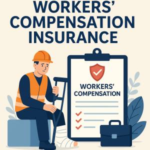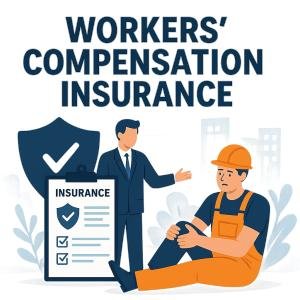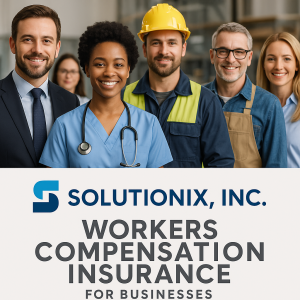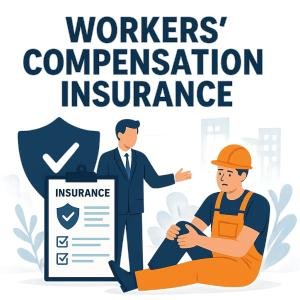
What Does Workers Compensation Cover? A Plain-English Breakdown
August 2, 2025
Event Security Guards in Georgia: Seasonal Staffing & Workers’ Comp Compliance
August 2, 2025
A team of professionals in an office setting related to workers’ compensation insurance.
In the highly competitive security industry, managing operational costs while ensuring employee safety is paramount. One critical factor affecting a security company’s bottom line is the workers’ compensation modification rate,which directly influences insurance premiums and overall financial stability.This case study examines how a mid-sized security firm successfully reduced its workers’ compensation modification rate from 1.6 to 0.9. Through targeted risk management strategies, employee training enhancements, and proactive claims management, the company not only improved workplace safety but also achieved notable cost savings. This article explores the methodologies implemented, challenges faced, and measurable outcomes realized, offering valuable insights for security firms aiming to optimize their workers’ compensation profile.
Table of Contents
- Security Risk Assessment and Incident Analysis Driving Mod Reduction
- Implementing Targeted Safety Training Programs for Security Personnel
- Optimizing claims Management to Minimize Workers Compensation Costs
- Strategic Recommendations for Sustaining Mod Improvement in Security Operations
- Q&A
- to sum up
Security Risk Assessment and Incident Analysis Driving Mod Reduction
- Detailed incident reporting with immediate supervisor involvement
- Employee feedback sessions to uncover latent hazards
- Review of environmental factors contributing to incidents
- Training enhancements based on identified risk patterns
This data-driven approach was periodically reviewed, resulting in timely adjustments and reinforcing prosperous tactics. The following table summarizes the impact of specific interventions on reducing incident frequency and severity:
| Intervention | Incident Reduction | Severity Reduction |
|---|---|---|
| Enhanced Training Programs | 35% | 40% |
| Improved Incident Reporting | 22% | 30% |
| Environmental Hazard Controls | 28% | 35% |
Implementing Targeted Safety Training Programs for Security Personnel
| Training Module | Key Objectives | Frequency |
|---|---|---|
| Risk Identification | Recognize workplace hazards | Quarterly |
| Conflict Management | De-escalate aggressive behavior | Bi-Annual |
| Physical Safety Techniques | Safe physical interventions | annual |
| Emergency Response | Evacuation & first aid basics | Bi-Annual |
- Ongoing evaluation: Regular testing to ensure retention and application of safety protocols.
- Customizable content: Adapt training to reflect site-specific risks and operational challenges.
- Interactive delivery: Use of multimedia, role-playing, and group discussions to enhance engagement.
optimizing Claims Management to Minimize workers compensation Costs
Successful claims management hinges on proactive engagement, swift communication, and robust documentation. By implementing a dedicated claims coordinator and leveraging real-time reporting tools, the security guard company was able to accelerate claim resolution and reduce prolonged exposure to costs. This approach not only enhanced openness for all stakeholders but also facilitated early identification of potential fraudulent or exaggerated claims, thereby preventing unnecessary financial drains.
Structured return-to-work programs and ongoing employee education played a pivotal role in driving down their experience modification rate. By collaborating closely with healthcare providers and adjusting workloads to accommodate injured workers’ capacities, the company minimized lost workdays and supported faster recoveries. This multi-faceted strategy resulted in a sustainable reduction in costs, as demonstrated below:
| Key Initiative | Impact | Outcome |
|---|---|---|
| Dedicated Claims coordinator | Faster claim processing | 35% reduction in claim closure time |
| Early Injury Reporting | Improved transparency | 40% decrease in unreported incidents |
| Return-to-Work Programme | Reduced lost workdays | 50% increase in employee retention post-injury |
| ongoing Employee Training | Enhanced safety awareness | 30% fewer preventable injuries |
Strategic Recommendations for Sustaining Mod Improvement in Security Operations
To maintain long-term improvements in your workers’ compensation modification rate, it’s essential to embed a culture of continuous safety enhancement within your security operations team.One of the most effective approaches is implementing regular safety audits and employee training sessions. This not only ensures compliance with current regulations but also reinforces safe practices, reducing incident rates over time. Empowering staff through clear communication channels encourages proactive hazard reporting, thereby preventing potential injuries before they occur.
Additionally, leveraging data-driven insights can help pinpoint patterns and tailor interventions effectively. Consider the following strategic initiatives:
- Quarterly performance reviews focused on injury metrics and safety benchmarks.
- Incentive programs that reward teams for achieving zero-incident goals.
- investment in modern protective equipment and technology to minimize risks.
- Collaboration with insurance providers to optimize claims management and rehabilitation processes.
| Key Strategy | Expected Outcome | Implementation Frequency |
|---|---|---|
| Safety Audits | Identify and mitigate risks early | Monthly |
| Employee Training | Improved hazard awareness | Quarterly |
| Performance Reviews | Data-driven improvements | Quarterly |
| Incentive Programs | Increased employee engagement | Ongoing |
Q&A
Q&A: Security Guard Workers’ Comp Mod Reduction Case Study – From 1.6 to 0.9
Q1: what is a workers’ compensation modification (mod) factor, and why does it matter for security guard companies?
A1: The workers’ comp modification factor, or mod, is a numerical adjustment applied to a company’s workers’ compensation insurance premium based on its past claim experience compared to industry averages. A mod above 1.0 indicates worse-than-average claims history and results in higher premiums, whereas a mod below 1.0 rewards companies with better safety records through lower premiums. For security guard companies, mod factors directly impact labor costs and competitive positioning.
Q2: What challenges did the security guard company face with a 1.6 mod factor?
A2: A 1.6 mod factor meant the company’s workers’ comp premiums were 60% higher than the baseline industry rate. This created ample financial strain, reduced profit margins, and diminished their ability to bid competitively for contracts. The elevated mod also implied a poor safety record, perhaps affecting client confidence and employee morale.
Q3: How did the company approach reducing its mod from 1.6 to 0.9?
A3: the company implemented a comprehensive risk management strategy focusing on injury prevention, claims management, and employee engagement. Key steps included enhanced safety training tailored to security personnel, proactive hazard identification, swift reporting and management of workplace incidents, and collaboration with insurers to monitor claims. Additionally, they fostered a culture of accountability and continuous improvement.Q4: What specific safety measures contributed most to the mod reduction?
A4: High-impact measures included:
- Conducting detailed risk assessments at client sites to mitigate environmental hazards.
- Providing scenario-based training to prepare guards for common risks such as physical confrontations and emergency response.
- establishing clear protocols for injury reporting and return-to-work programs.
- Regularly reviewing incident data to identify trends and implement corrective actions.
These initiatives collectively reduced injury frequency and severity.
Q5: How long did it take for the company to achieve the mod reduction?
A5: The mod factor reduction from 1.6 to 0.9 was realized over a period of approximately 3 to 5 years. Mod factors are calculated based on a multi-year claims history, so sustained improvements in safety and claims outcomes are necessary to influence the mod.
Q6: What were the financial impacts of lowering the mod factor?
A6: By reducing the mod to 0.9, the company decreased its workers’ compensation insurance premiums by roughly 44% compared to the original cost at 1.6. This resulted in significant cost savings, improved cash flow, and enhanced ability to invest in growth initiatives. The lower mod also improved the company’s marketability to clients prioritizing safety.
Q7: What lessons can other security guard firms learn from this case study?
A7: The primary takeaway is that consistent commitment to safety excellence-through employee training,proactive risk management,and effective claims handling-can materially reduce workers’ compensation costs. investing in a safety culture not only protects employees but also delivers substantial financial returns and competitive advantage.
Q8: How can companies sustain a lower workers’ comp mod over time?
A8: Sustainability relies on ongoing monitoring of safety performance, adapting training to evolving risks, maintaining open communication with employees and insurers, and promptly addressing new hazards. Companies must embed safety into daily operations and leadership priorities to preserve and build on mod improvements.
This Q&A provides a clear overview and actionable insights for security guard companies aiming to reduce their workers’ compensation mod factor through strategic safety and risk management initiatives.
to sum up
this case study illustrates the tangible benefits that a strategic approach to safety management and claims handling can deliver for security guard firms. By implementing targeted risk mitigation measures and fostering a culture of proactive injury prevention, the company successfully reduced its workers’ compensation mod rate from 1.6 to 0.9. This not only led to significant cost savings but also enhanced operational efficiency and employee well-being. For security businesses seeking to optimize their workers’ comp programs, adopting these best practices can be a critical step toward sustained financial and organizational health.
“This content was generated with the assistance of artificial intelligence. While we strive for accuracy, AI-generated content may not always reflect the most current information or professional advice. Users are encouraged to independently verify critical information and, where appropriate, consult with qualified professionals, lawyers, state statutes and regulations & NCCI rules & manuals before making decisions based on this content.






